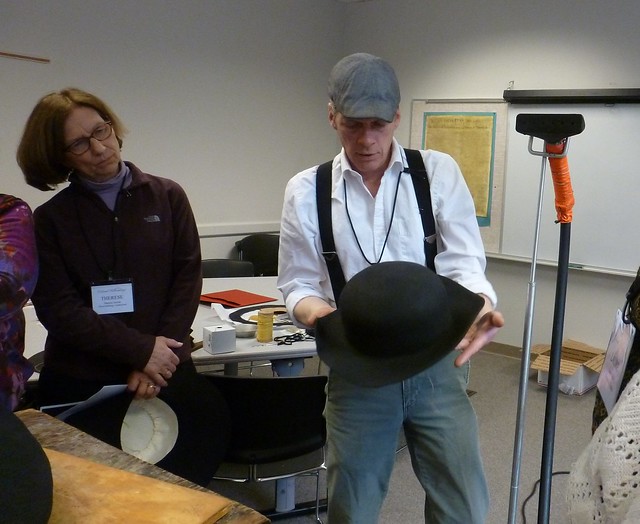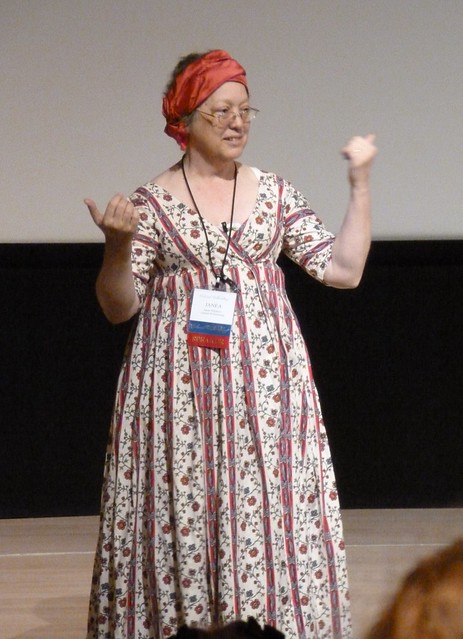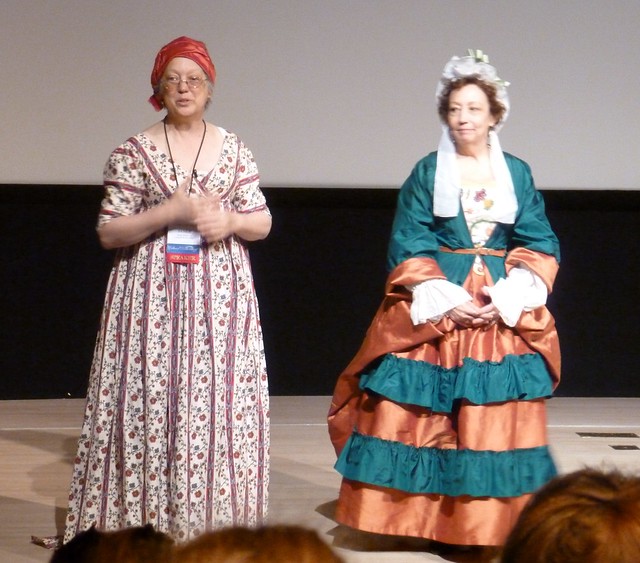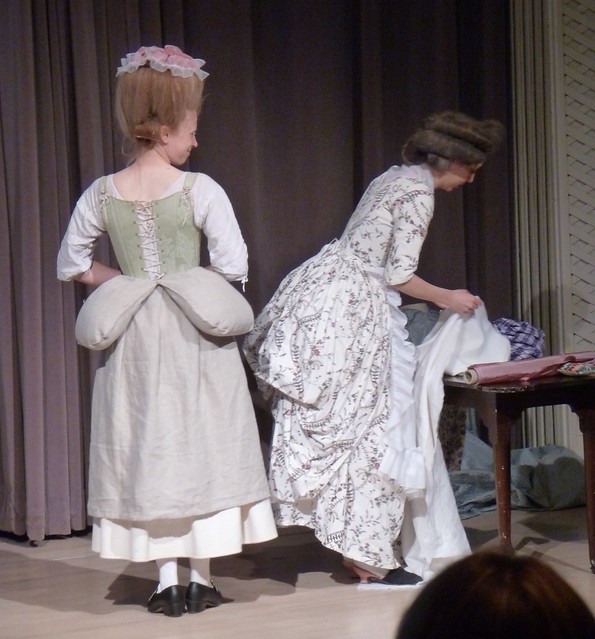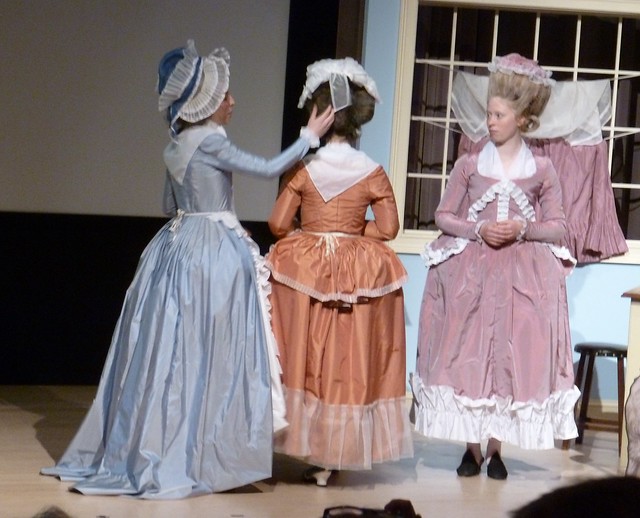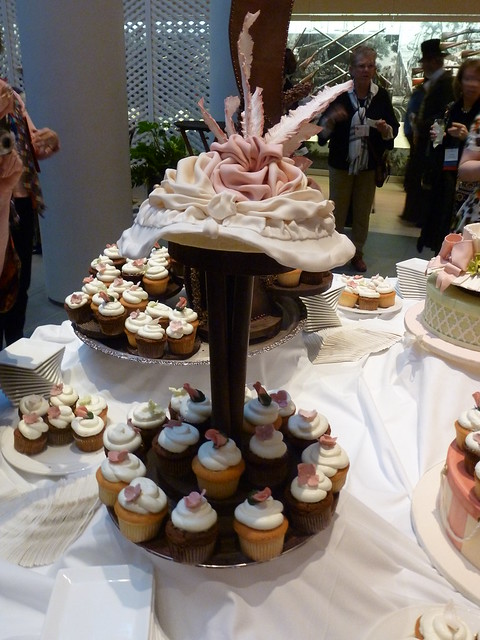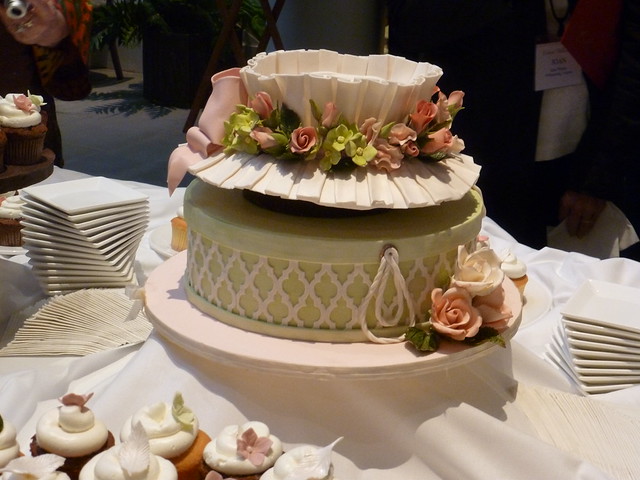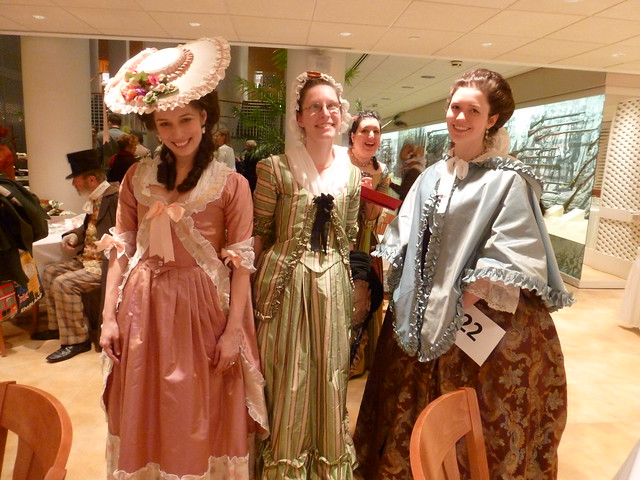A 1770s Silk Muff
During the
accessories conference at
Colonial Williamsburg back in March, I was fortunate enough to be able to take
a silk muff workshop led by Janea Whitacre, mistress of the trades of millinery and mantua-making at CW, and her very able and charming young apprentice, Miss Emma. We had about three and a half hours to talk about the evolution of muff fashion throughout the 18th century, choose our fabric, pattern our muffs, make them, stuff them, and trim them. Believe it or not, a number of the ladies were able to complete theirs! I was about 3/4 of the way done by the end of the workshop, and carried my unfinished project home...where it has sat in its same bag in the same spot on the floor since I deposited it there when I got home. At long last, I've finished it, though - just in time for winter festivities!
The Pattern: After explaining how the shape of muffs changed over the century, Janea gave us the measurements to use to create our desired shapes and sizes. In the 1770s, muff were slightly more rectangular in shape, while by the 1780s they had become more square-looking. I opted for a 1770s style, since that's the decade we re-enact the most (and I just personally prefer the way it looks to the later, more boxy style!).
Inspirations: As with hats, there are countless period images of muffs with all sorts of decorative embellishments, from embroidery to ribbon and floral trim to fur to printed portraits. Like hats, muffs are a place where you can let your creativity run wild - just so long as you don't let it stray outside of period-accurate materials! Karen's
18th Century Notebook page on muffs includes a very comprehensive listing of images of muffs and links to extant examples.
My own muff is based on one created by the CW milliners. It was featured, with a matching cloak (so pretty!), in the conference fashion show, and Janea brought it with her as an inspiration to the workshop. When I decided to change my original floral trim (keep reading for more on that), I went back to the pictures I had taken of Janea's piles and piles of gorgeous examples, and found this and wanted it! :-)
Construction Details: Janea explained how muffs could be made in two different ways. One is as a single piece, with a silk exterior and silk lining, and the stuffing wedged between the two. The other is to make a separate linen "pillow" tube that, once stuffed, becomes the foundation over which any muff cover can be slipped. I think all but one or two of us in the workshop opted for the second construction method. Who doesn't want an endless number of muff options to switch out with each new outfit? :-)
Stuffing the linen muff "pillow," over which the silk cover is slipped.
The construction was thus very easy and logical: all you do is create a tube of linen which is stuffed with wool and sewn closed. Then you create the cover by sewing channels at opposite ends of a rectangular (or square, if you prefer) piece of fabric and inserting ribbon into the channels to drawstring up the ends. Add the trim, sew the rectangle into a tube, slip it over the "pillow," and you're done.
The finished muff tube "pillow" (left) and the trimmed cover (right), which is about
to be sewn into a tube that will be slipped over the stuffed linen pillow.
Originally, at the workshop, I had selected a very pretty floral ribbon trim and sewed it in diagonal lines so that it wound around my muff. On second thought, when I picked the project up again out of the (dusty) bag, I decided I wanted to save that trim for something else, so I picked it all off and pulled out some ivory silk satin ribbon I had in my stash to box-pleat around the ends of the muff. It's simple, but I really like the way it turned out.
The most fun part of the workshop was seeing how completely different everyone's muffs ended up being. Val from
Time Traveling in Costume also attended the workshop; be sure to check out
her post about her own muff project. She got a great group shot of us all displaying our muffs at the end of the day. If anyone else was there and has posted pictures of her finished muff, I'd love to add you to this post!
The Fabric: A green shot ivory silk taffeta, trimmed in cream silk satin ribbon. The inside pillow is made of a medium-weight linen, stuffed with wool from the sheep at Colonial Williamsburg. It's quite cozy!
Finishing the Look: I'm in the process of making a new cloak, which will coordinate nicely with this muff. Stay tuned for more once the weather turns cold enough to frolic in my new accessories!




